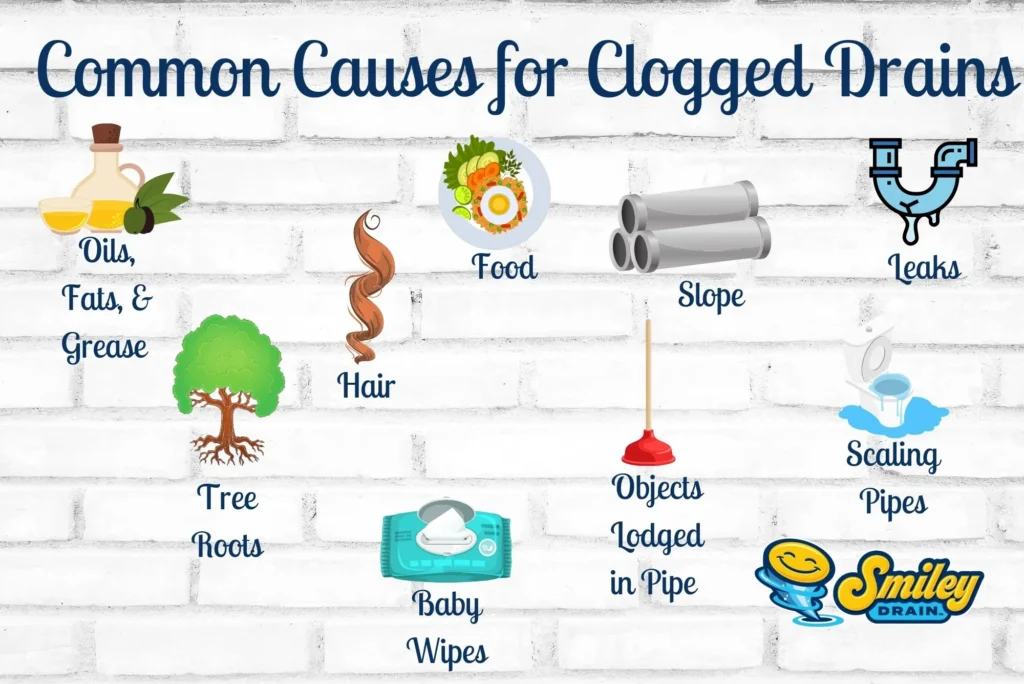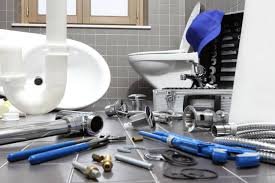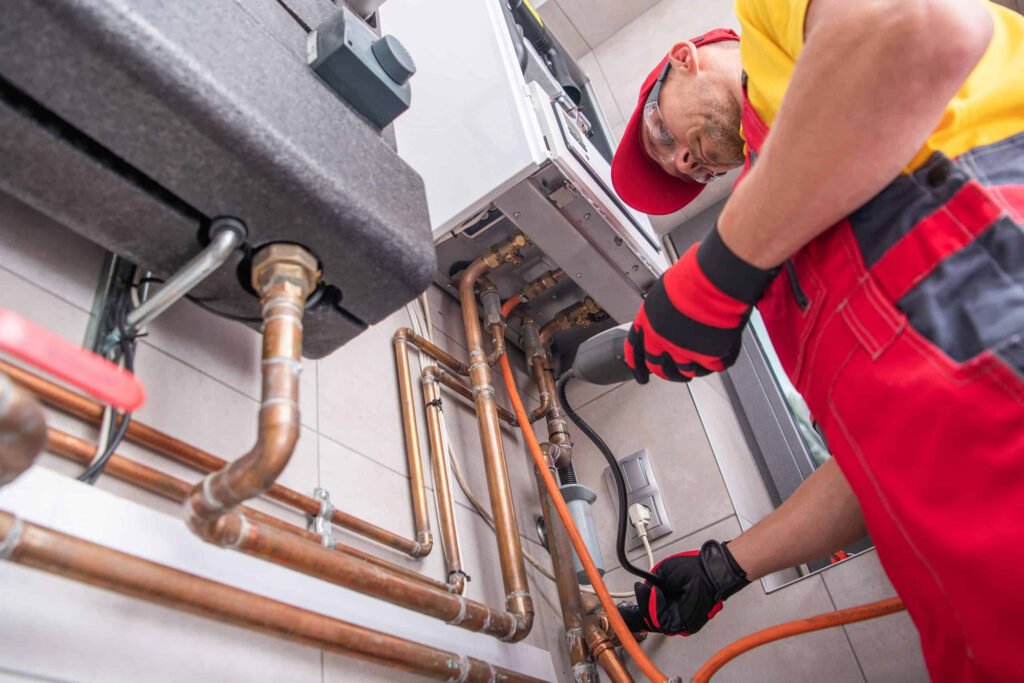Preventing kitchen drain clogs plays a crucial role in ensuring the kitchen is clean and fully functioning. They are also known to bring about disturbing smells, sluggish drains, and expensive repairs for your plumbing system. To prevent clogging of the sinks, make sure to use the sink strainer when washing utensils and to dispose of fats professionally. It is also recommended that you pour hot water on your drain after some time and once a month should use baking soda and vinegar to clean your drain. Rinse the fats and oils off the dishes and do not allow them to migrate to the sink before loading the dishwasher. In case of chronic problems consider consulting professionals who specialize in drain cleaning. To ensure that your kitchen drain is always free flowing without common problems of clogging you should follow these simple steps
Understanding the Causes of Kitchen Drain Clogs
Clogging in the kitchen drains is caused by different factors, which one must remember during the discussion of preventing such problems. Listed below are the primary culprits:

Food particles
Scrapes of food that go down your drain can accumulate there and result in a clog.
Grease and fats
Once grease or fats enter your pipe, they may cool down and coat the inner pipes, creating a sticky mess where other kinds of debris stick.
Soap residue
Soap scum may be combined with other particles to form a clog.
Foreign objects
Small things, such as bottle caps, small utensils, or bits of packaging, can get into the drain and block it.
2. Good Daily Habits to Avoid Clogging of Drains
Good daily habits are the best way to avoid clogging of your kitchen drains. Following are some very simple yet useful practices:

Use a Drain Strainer
By using a drain strainer one of your best and cheapest appliances—you can easily avoid clogs by catching food particles and other types of garbage from going down the drain. Cleaning the strainer should be within your schedule to ensure it is always operational.
Run Hot Water
Run hot water for a few seconds after using the sink. This helps dissolve any grease or soap residue that might have found its way into the drain.
3. Weekly Maintenance
In addition to the daily schedule one can also practice the weekly schedule to maintain the optimal situation for the kitchen drain.
Baking Soda and Vinegar
A mixture of baking soda and vinegar can also clean and deodorize drains. To the drain pour down half a cup of baking, momentarily followed by half a cup of vinegar. Leave it for about 15 minutes, then flush with hot water. It is a natural way to dissolve buildup and get rid of chances for clogs.
Boiling Water
Pour a kettle of boiling water down the drain at least weekly this will dissolve any accumulation of grease or fats.
4. Effective Monthly Cleaning
For a more effective cleaning, here are some monthly cleaning steps for clearing the kitchen drain.
Utilize enzyme cleaners
Pouring an enzyme based drain cleaner will make short work of anything causing a blockage. They are not harmful to the water pipes as they contain natural enzymes that break up organic materials. Just follow the label on the product for the best results.
Plunger
Fill the sink with water sufficient to cover the cup of the plunger, then plunge vigorously. That will push through any obstruction to flow.
5. Signs that Mean You Need Professional Help
No matter how hard you try, sometimes clogs become too severe for the do-it-yourself solutions to mend. Here are some of the red flags that suggest it is time to call in professional drain cleaning services:
Slow drainage
When there is a slow rate of draining in your sink despite all the efforts you have put forth to clear it there might be more to the problem.
Gurgling
Strange noises from your drain might be a sign that there is either a blockage or a venting issue.
6. Tips to Look for the Best Company for Drain Cleaning
When you need a professional you want the best drain cleaning company on the job. Here is how you can find a legit drain cleaning expert:

Google it and check the reviews
Look for reviews or general reputation in one area. The best way to know that is through online review sites or word-of-mouth recommendations.
Services Offered
Choose a service provider that offers a full range of services, including kitchen drain cleaning services. This means that the company is equipped with the proper experience to address your issue.
Transparent Pricing
Select a company that provides upfront and straightforward pricing. Agree to nothing less. If a company is not crystal clear regarding charges upon presenting the plumber to you, it must give you a valid reason.
Never accept companies that present hidden charges
Professional drain cleaners can offer the following additional preventive methods to keep your drains in excellent working condition:
Hydro Jetting
This high-pressure water cleaning technique is the best in scouring and clearing out the insides of your pipes down to the most aggressive clogging elements and preventives in your drains.
Camera Inspections
A camera inspection can determine the exact location and cause of the blockage. This makes the treatment pinpoint, and the patient is not at risk of another encounter in the future.
Preventative Maintenances
Most drain cleaner companies also offer periodic maintenance plans. These plans offer periodic checkups and cleanings so that blockages do not become a huge headache.
8. Environmental Consideration
When cleaning drains, consider the environment when choosing the cleaning products and the method.
Avoid Harsh Chemicals
Most commercial drain cleaners contain many harsh chemicals that are harmful to the environment and, in the long run, to your pipes. Consider natural or enzyme-based clearing agents.
Water Conservation
Do not waste gallons of water cleaning your drains. Do not run water unnecessarily, and immediately repair any leakages to preserve a natural resource.
9. Do It Yourself or Call for Professional Help
While minor clogs can be quickly taken care of through DIY means, one has to realize the difference. It needs a professional’s help
Pros of Do It Yourself
DIY methods are generally more cost-effective than professional help. Minor problems can be quickly taken care of by DIY methods, while one needs to set an appointment for professional help.
Disadvantages with DIY
To deal with significant and frequent blockages, more than DIY methods are needed. Misusing tools and chemicals can worsen your plumbing system.
Benefits with Professional Assistance
A professional will be equipped with the necessary knowledge and tools to clear stubborn congestion or any other issues at the root. Pro cleaning can prevent future blockages and also extend the lifespan of your plumbing system.
10. Useful DIY Solutions for Minor Clogs
If you are not forced to call in the professionals because of minor cases and want to free them yourself, there are some very useful solutions for unclogging.
Baking Soda and Salt
For persistent clogs, you can potentially flush out the solution of half a cup of table salt mixed with half a cup of baking soda. Let it sit undisturbed for at least an hour before flushing it out with boiling water.
Using a Plunger
Press the plunger down and up to try to dislodge the clog. First, ensure enough water in the sink to cover the plunger cup completely. Then, create a good seal over the drain and plunge it up and down quickly to try and force the clog through the pipe.
11. Advanced Drain Cleaning Ways
If the home methods do not work drain cleaning services experts have advanced ways of dealing with clogs.
Hydro Jetting
Hydrojetting is the act of using elevated pressure water to clear stubborn blockages in cases where other methods do not work. It is the most effective method for removing grease and scale-type blockages.
Auger or Snake
The auger, or what is commonly referred to as a snake is a long, flexible instrument inserted into the clog to get deep inside. It is inserted through the drain and is turned around, chewing up and clearing away the blockage. This technique can be performed on minor and significant, entrenched blocks.
Camera Inspection
Many legitimate drain cleaning operations will conduct a camera inspection to diagnose what is causing the clog and where exactly it is. This allows them to identify the property, clean it entirely, and prevent future issues.
12. Keeping Your Kitchen Drain for the Long Term
Unblocking the kitchen drain will be useful only in the long term when carried along with maintenance and preventive measures.
Periodic Checks of
Organize routine inspections by a specialized cleaning company for drains to identify anything potentially hazardous before it causes significant disasters. By doing so, you will always be protected from costly repairs and will keep your plumbing system in order.
Regular Cleaning
Regular cleaning should be maintained with daily practices, once-in-a-week maintenance, and monthly deep cleaning. This will prevent the build-up, and your drain will always be clear and smooth enough to pass waste.
Educate Your Household
Teach everyone in your household the correct usage of kitchen drains. Ensure that they are well aware of proper disposal methods for grease and food scrapes and adequate use of drain strainers.
13. Other Ways to Avoid Clogging Your Kitchen Drains
The following list is a few more ways you can prevent kitchen drains from clogging:
Do Not Drain Coffee Grounds
Coffee grounds can aggregate in volume and build clogs. Trash them in the trash can or in your compost pile instead.
Run Cold Water with Your Garbage Disposal
When you turn on your garbage disposal, run cold water with it. Cold water hardens and congeals any grease or fat making it easier for the disposal to chop it up.
Know What You Can and Can’t Put Down the Drain
Fibrous food wastes such as celery and corn husks should be kept out of the drainage system. Starchy food wastes like pasta, rice, and eggshells should also be avoided. All these are potential causes of blockages.
Flush the Drain with Hot Water After Each Use
Turn on the hot water for a few seconds after washing dishes and any other uses to force all particles down the drain to keep it clear of blockages.
14. When to Replace Your Pipes
Sometimes, stubborn clogs and frequent drainage problems signify that your piping needs replacement.
Age of the Piping
Older piping in your house may be at a higher likelihood when having clogs and other very many problems. Have them checked by the technician to know when it’s time to replace them.
Recurring Clogs
If you often experience clogging even after regular maintenance and having your pipes professionally cleaned, this is probably due to damage that has accumulated over time or to the ongoing deterioration of your pipes.
Visual Damages
Visually inspect pipes for damage, such as cracking and corrosion. Damaged pipes can cause leaks and clogging. These may need to be replaced.
15. Cost Considerations on Drain Cleaning
Knowing the cost of cleaning drains will enable you to maintain the budget for DIY techniques and professional services.
DIY Costs
The costs involved with DIY drain cleaning methods are relatively cheap. Baking soda, vinegar, and boiling water are normally found in the house, and hence there is no need for them to be purchased since they will only be used to clean the drains. A simple plunger or a drain snake are also found at the hardware store at a relatively cheap price to buy.
Conclusion
The long and short of a prevention program against kitchen drain clogs is founded on good, daily habits collated with regular maintenance and expertise. By following the tips in this guide, you can keep your kitchen drain working properly, free of headache and significant clog expenses. Remember, when in doubt, do not be afraid to call in a reputable drain cleaning company to make sure your plumbing system is everything it should be. From general upkeep to emergency work, professional drain-cleaning contractors provide the knowledge and equipment needed to take all the build-up or blockages out of your kitchen drain.



